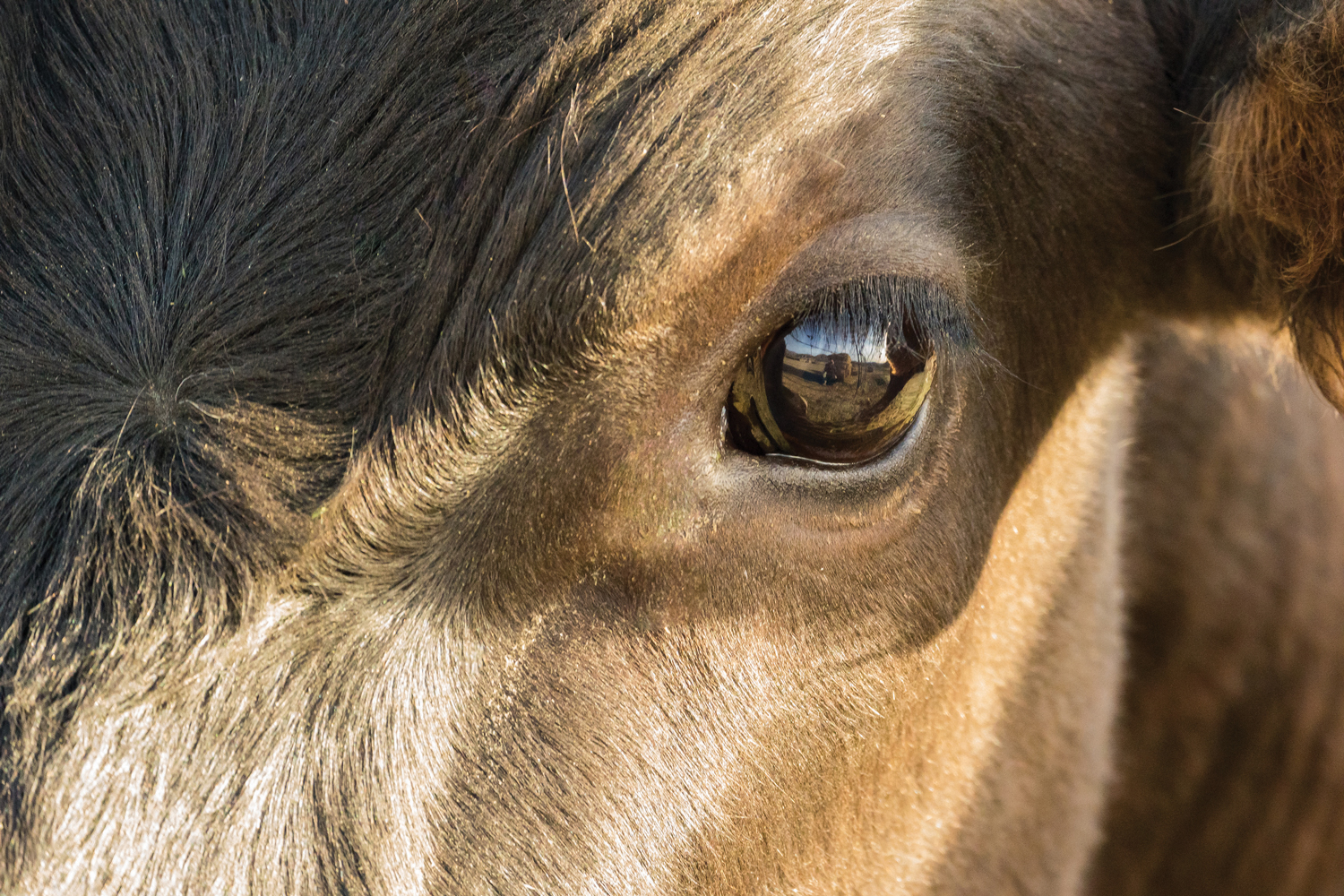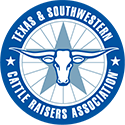Keep an Eye on the Eyes of Your Cattle

By Ellen H. Brisendine
Pinkeye in beef cattle is painful, contagious, and treatable if the herd owner recognizes the symptoms — cattle that are squinting in sunlight, have weepy, red, and irritated eyes — and starts treatment right away.
With some attention to grazing management, hay feeding conditions, maintaining clean cattle working equipment and controlling face fly populations, flare-ups of pinkeye in the cattle herd can be minimized, says Dr. Jacques Fuselier, manager of cattle technical services for Merck Animal Health.
“There is no magic bullet to treat pinkeye,” Fuselier says. “It’s a multifaceted disease. The bacteria that cause pinkeye are some of the normal bacteria that live in the upper respiratory tract, the eyes, and the mucous membranes. Something has to happen to allow the bacteria to take hold and start causing this infection,” he explains.
That “something” is a breakdown of the normal protective barrier for the cattle — either a breakdown in the immune system making the cattle susceptible to infection or a physical breakdown, such as a seedhead, a hay stalk or an ear tag scratching the eye.
Tall, stemmy forage may poke the cows and calves in the eye when they graze and abrade the eye. A piece of dry, brittle, dusty hay could scratch the eye. A calf can injure its own eye with an ear tag when it shakes its head. Viruses such as IBR can also lead to pinkeye.
“Anything that can irritate the eye can break down some of those barriers and set up the opportunity for bacteria to start causing an infection,” he says.
Cattle pinkeye symptoms
Symptoms start with sensitivity to light, reddened eyes and excess tear production. As the disease progresses, an ulcer can develop on the eye. The ulcer appears as a white spot on the cornea.
In severe cases, the white spot can expand to cover the eye and can cause the eye to rupture if the ulcer is severe enough.
“The ticket is to prevent the disease from getting to that phase. This takes early detection and treatment to stop the disease,” he says.
Control the contagion
Pinkeye is highly contagious and spreads quickly through the herd. Face flies have been blamed for causing pinkeye but really, they just help spread it.
“The moisture from the weeping eyes of the cattle is attractive to face flies,” Fuselier says. “They will fly from animal to animal spreading the virulent bacteria,” he explains.
Other ways the bacteria spread include calves and cows rubbing on each other or rubbing against contaminated ranch equipment.
Pinkeye keeps cattle from eating as well as healthy cattle. “Gains go down, milk production in the mature cows goes down. Labor costs increase because the rancher is riding through the pastures more often and treating the cattle.”
Avoid eye injury
Avoid pinkeye with careful pasture and hay management to avoid eye injury, Fuselier says. Feed quality hay, not dry, dusty, brittle hay. Keep pastures grazed appropriately so cattle don’t have to bury their head through tall, mature grass to get down to the tender, more nutritious grass.
At the early stage of infection, an eye patch can be a help in treatment. “This does a few things,” Fuselier says. “It covers that affected eye, protects it from the sun, minimizes the chance for any flies to get into the infectious fluid and provides a good barrier to allow for healing to occur without any external insults while minimizing some of the spread.”
Consider fly control, such as fly ear tags, pour-on insecticides, and insecticidal back rubs to help control the spread of the disease. Some ranchers find it useful to put out mineral or feed that contains an insect growth regulator, which reduces the flies’ ability to reproduce.
There are vaccines to help protect cattle against pinkeye. To be effective, they should be part of a larger management plan to reduce eye injury and herd contamination.
Disinfect tools and equipment, dispose of gloves
Humans can carry the bacteria from animal to animal through gloves and equipment, Fuselier says. “Ideally, ranchers would get a treatment protocol from their veterinarian. The typical treatment is going to include something to help keep flies away, something to protect the affected eye, and an appropriate antibiotic.
“Any tools that are used to restrain the head of the cattle for treatment, such as a halter or nose tongs, should be cleaned and disinfected. A dilute bleach solution usually works well. Any of the other antiseptics that are on the market, whether it be a chlorhexidine or a betadine, usually do a good job.
Throw away disposable gloves. Any other hand-held equipment should be soaked in the disinfecting solution and dried in the sun.”
The working pen panels, squeeze chute and head gate should be cleaned and then sprayed with disinfectant before healthy cattle are brought in to be worked.
Fuselier says all parts of the squeeze chute need to be sprayed, including the tailgate.
“Think about animal behavior. When a calf or cow is in the squeeze chute, there is another animal behind it at the tailgate of the chute. That one behind is nosing around, trying to push into the squeeze chute. Then the next animal that comes in does the same thing,” he says. Remember to disinfect the tailgate of the chute after working infected cattle.
When you replace fly tags in the ears of your cattle, bag them up and dispose of them. Leaving old fly tags around may aid in the fly population becoming resistant to certain classes of insecticides.
Keeping your eyes on the eyes of your cattle is the best first step to avoiding a painful and potentially costly disease in your beef cattle herd.
Keep an Eye on the Eyes of Your Cattle is excerpted from the April 2018 issue of The Cattleman magazine.
